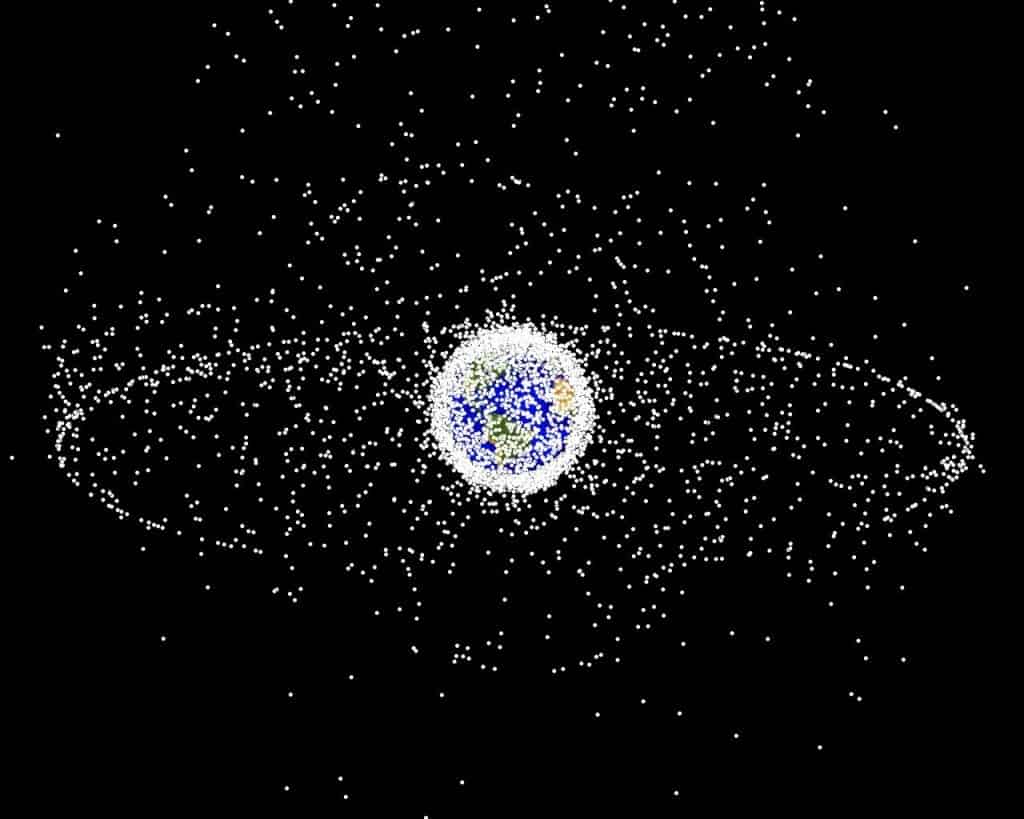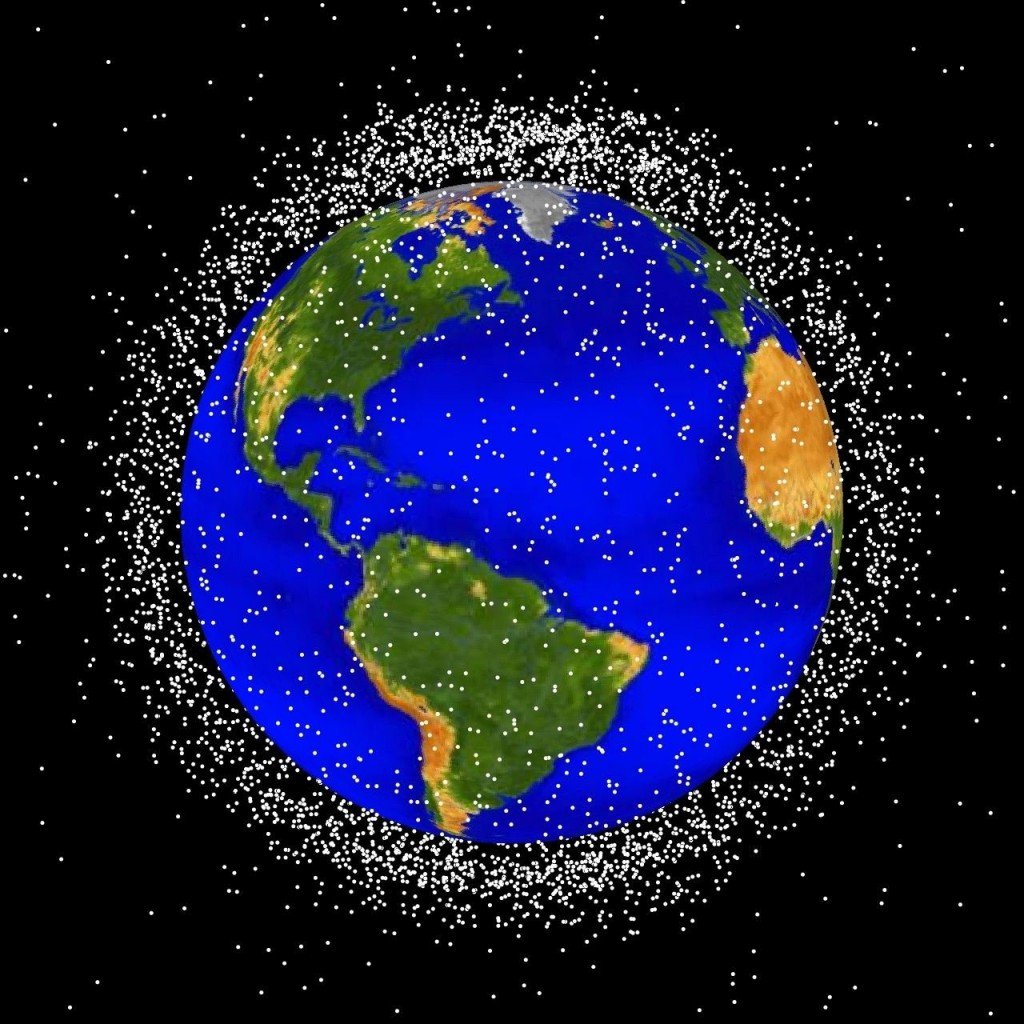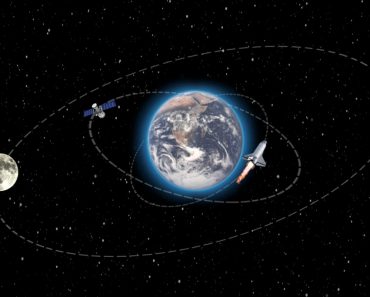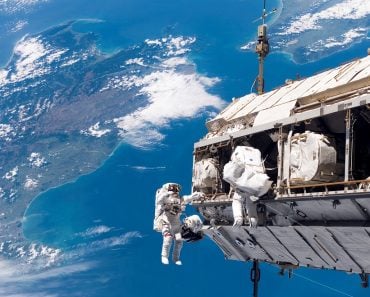There is a lot of space junk orbiting the Earth, and it’s a big problem because it can damage satellites. Space engineers slow down defunct satellites and let them fall back to Earth to burn up in the atmosphere, or they push them into a higher orbit called the “graveyard orbit.”
As of now, there are more than a thousand artificial satellites orbiting the planet at different altitudes (and inclinations) above the ground. However, these are just the operational ones. If you also consider defunct satellites and every ‘good-sized’ piece of old satellite circling our planet, the number would be much higher.

The problem with so much space junk is that it could (and actually does) pose a huge threat to the satellites working or traveling through the orbits. Modern rocket launches are executed after days upon days of research and analysis of many factors, and the problem of space garbage is a critical one among them, as it directly impacts the safety and integrity of the launched rockets and their payload.
In the primitive days of space exploration, scientists and space engineers didn’t thing much about the distant future of the satellites they launched. In other words, they did not worry about what would happen to all the rockets and satellites they were putting into space once they became inoperative. These days, however, there is so much space garbage around our planet that even a small-scale collision between two objects can trigger a chain reaction that could potentially end in a catastrophe, much like the one shown in the movie Gravity.

However, just like any other machine, satellites also have a definite life beyond which they are of no use, but unlike a toaster, washing machine or a motorbike, satellites operate in space, which means you cannot dismantle them and sell them for parts or just leave them there. So, how are the ‘bodies’ of such dead satellites disposed of?
Recommended Video for you:
What Happens When A Satellite Dies/is No Longer Operational?
Short answer: There are two methods by which we dispose of broken satellites. First, we slow down the defunct satellite in question and let it fall back towards Earth and burn up in the atmosphere during reentry. Second, we push the inoperative satellite into a higher orbit around the planet, where it will keep orbiting the planet for hundreds of years and stay out of the way of functioning satellites.
As you might already know, various satellites orbit our planet at different altitudes; some travel very close to it (a few hundred kilometers above the ground, like the ISS), while other satellites revolve tens of thousands of kilometers above Earth (like, geostationary satellites).
The method of disposal of an inoperative satellite relies hugely on how far away it is from our planet. So, let’s consider the first scenario…
The Satellites That Orbit Close To Earth

For discarding a satellite that orbits close to Earth, space engineers change its orbit slightly so that it enters a lower orbit and reenters the atmosphere burning up on its own over a span of 25 years (after the completion of its mission). This is known as the ’25-year rule’ of satellites.
If the satellite in question is too big to be burned up completely during re entry, then the last bit of the satellite fuel is used to slow it down and de-orbit it on purpose so that the debris falls over a remote area, hundreds of miles away from any civilization. This remote area is very aptly nicknamed ‘the Spacecraft cemetery’, and is located in the southern Pacific ocean.

The Satellites That Orbit Far From Earth
If the satellite in question orbits very high above Earth, then slowing it down and making it de-orbit would require a lot fuel, something that a satellite at the end of its operational life lacks. So, instead of applying brakes to its orbital speed, the satellite is pushed into a higher orbit, known as the ‘graveyard orbit’.

Graveyard Orbit
Also referred to as a junk orbit or disposal orbit, it lies higher than the most commonly used orbits of operational satellites. More specifically, it lies at a staggering 22,400 miles (36,050 km) above Earth, which is around 200 miles (321 km) above the farthest active satellites. Obviously, defunct satellites in the graveyard orbit stay well clear of functioning satellites.
Pushing dead satellites into a higher orbit also makes sense from the ‘fuel economy’ standpoint, as pushing an inoperative satellite into the junk orbit requires a delta-v (change in the velocity of the satellite) of only 11 m/s (36 ft/s), whereas de-orbiting requires a change of about 1,500 m/s (4,900 ft/s)!

The benefit of putting dead satellites into the junk orbit is that they stay up there and continue revolving around the planet for a couple hundred years before losing their altitude. However, we are not worried about that distant future. Who knows, maybe two or three centuries from now, we will have garbage collector rockets to clean up all the litter we’ve left in space!













